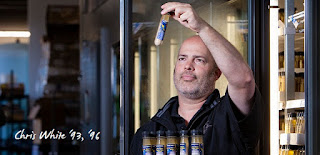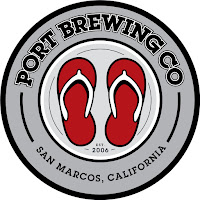Ottawa.
Ottawa is Canada’s Capital city.
It’s province Ontario can be divided into the north, which is forested and sparsely populated, and the south containing most of the population and farming land.
The south includes the cities of Ottawa, Toronto and Hamilton.
Ottawa is on the eastern edge of Ontario, where it borders French speaking Quebec, separated by the Ottawa River.
It has a wealth of cultural spaces.
The beautiful Parliament Hill, home to the Houses Of Parliament and Senate. National galleries, excellent museums and the historic Rideau Canal.
The Byward Market offers unique cafe’s and specialist food shops and the Downtown area contains its restaurants, micro brewpubs and independent shopping.
Contrast these with it’s metropolitan area containing embassies, government offices, banks and the white collar businesses of a busy capital city, and the Rideau Shopping Centre, containing large chains and bus station.
The people are polite and all of the hospitality staff exceptional. There is some disparity in the city, with little support for those homeless and the out of work, so prepare to be asked politely, but assertively, for change.
Often unfairly overshadowed by Toronto, Ottawa is a great spot. Historic and cultural with a nightlife with lots of seriously good independent bars, restaurants and poutineries offering Canadas national dish, Poutine.
But hey, I’m not a travel writer, you can find this info anywhere, let’s talk beer!
 AB InBev owned, Canadian Macro’s, Labatt, Alexander Keith’s and Mill Street Brewery dominate the Irish and Sports Bars. Along with Sapporo owned Sleeman, Molson and American Macro Brands in most others.
AB InBev owned, Canadian Macro’s, Labatt, Alexander Keith’s and Mill Street Brewery dominate the Irish and Sports Bars. Along with Sapporo owned Sleeman, Molson and American Macro Brands in most others.
But just below the surface is a wealth of Craft Beer.
Toronto based Bellwood Brewery are world renowned and have collaborated with Evil Twin. While Montreal’s Dieu Du Ciel have several Rate Beer Top 50 brews.
Craft Beer in Canada is localised with most microbreweries not leaving their own province.
(Pictured me at Brothers Beer Bistro)
Ottawa has had its own boom in the last few years with many microbreweries opening and craft beer appearing in restaurants and bars. Established brewery Beau’s donated old equipment to help younger brewer Beyond The Pale increase capacity. Small batch experts Whiprsnapr are responsible for some very creative beers, and hockey player owned Big Rig are having huge growth.
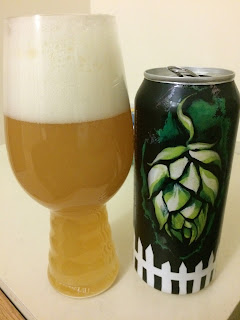 Due to the wealth of microbreweries, transport costs and local loyalty, bars and restaurants in Ottawa stock beer almost entirely from Ontario, and much from around the city.
Due to the wealth of microbreweries, transport costs and local loyalty, bars and restaurants in Ottawa stock beer almost entirely from Ontario, and much from around the city.
All beers are kegged and force carbonated during brewing. A small amount of cask does get produced, though one brewer told me that they heavily refrigerate before sale.
Draught beer is predominately served in pints and half pints.
Until new legislation was brought in in 2014 there was no standardised size for a pint measure, different bars and even individual beers had different sized “pint” glasses.
At most bars there are three sizes, the now standardised 20oz pint, the same as the UK, a Canadian 16oz, received if you do not specify a pint, and a half pint at 10oz.
The smallest serving is 0.2l around a 1/3rd and is usually only available in a taster board. Across Canada bar staff will be more than accommodating offering generous tasters of any draught beer.
The bars are on the expensive side, with HST tax added at purchase and 15% tip expected, meaning you don't quite know what you've spent until receiving the bill.
Outside of the bars all alcohol purchases are controlled by the Liquor Control Board Of Ontario, and sold in government owned Off Licenses; The Beer Store, Wine Rack and LCBO.
The LCBO had the best craft range and stock solely from there local area.
Being government ran the prices are low in contrast to the bars. All breweries allow home purchase but most of the bars don’t.
(Pictured Beyond The Pale - Aromatherapy IPA)
There are also a number of Micro-brewery Taps, some independent like Beyond The Pale and others branded operations like Clocktower Brew Pubs and my first stop 3 Brasseurs.
Begun in Lillè, they expanded over France, before moving in 1985 to Montreal then around Quebec and finally into Ottawa.
They offer six beers brewed in house, a “neighbourhood special” only available in that location and a seasonal.
At their Sparks Street location I tried regulars Ambree (Amber) and IPA. The recipes are good but its the freshness that stands out, most noticeably in the IPA. The Neighbourhood beer was Lucky Penny a Copper Rye Ale, and the Seasonal Blizzard, an 8% Barley Wine which was ok but tasted more like a strong American golden ale.
The fermenters are viewable behind a bar which has seating and large television screens. Its a pleasant space with a good atmosphere, but lacking in personality.
We had nachos and our waiter recommended visiting The Black Tomato for Ottawa beer and great burgers.
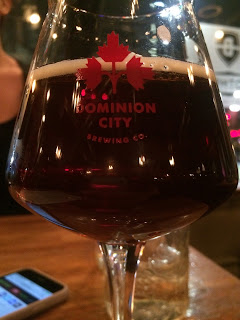 We had eaten a lot of nachos, so we didn't try the burgers, however the beer selection was very good. Due to it being January there were 12 of the 21 taps available, and we chose a tasting board of 4. This included Stalwart Brewery from Carleton Place in Ottawa, a brewery I would continue to seek out during my visit. The board featured Dr Feelgood, an excellent, thick, pine and citrus IPA with Barley, Wheat and Rye and Thriller, an Imperial Porter with Cocoa Nibs. The Black Tomato is in the Byword Market in a late 19th century stone heritage building. It has a warm and bistro-like interior with a small bar with seats and restaurant tables. Our server was knowledgable and friendly and told us about another staff member who was from Leeds.
We had eaten a lot of nachos, so we didn't try the burgers, however the beer selection was very good. Due to it being January there were 12 of the 21 taps available, and we chose a tasting board of 4. This included Stalwart Brewery from Carleton Place in Ottawa, a brewery I would continue to seek out during my visit. The board featured Dr Feelgood, an excellent, thick, pine and citrus IPA with Barley, Wheat and Rye and Thriller, an Imperial Porter with Cocoa Nibs. The Black Tomato is in the Byword Market in a late 19th century stone heritage building. It has a warm and bistro-like interior with a small bar with seats and restaurant tables. Our server was knowledgable and friendly and told us about another staff member who was from Leeds.
After a day touring the rest of the city we finally hit Ottawa's highest rated bar on Ratebeer.
A few minutes from The Black Tomato, Brother’s Beer Bistro did not disappoint and we visited three times throughout my stay.
A small comfortable one-room space, with booths, window tables and some seats at the bar. With very knowledgable staff and 17 taps, these rotated around two taps a day, which is some going for the size of the venue and being January. They offer two tasting boards, “range” and “rare”, we opted for the rare board. This featured six beers with a selection of funky styles and an amazing bourbon barrel aged imperial stout from Nickel Brook Brewing, which I later brought home. Other highlights were a Bretted porter by Beyond The Pale and Dieu Du Ciel’s Peche Mortel, the highest rated Canadian Beer was dispensed with Nitrogen for a smooth beer, and was incredible.
The bottle fridge was extensive with a plethora of Canadian beers including Bellwoods as well as 3 Fonteinen, Jolly Pumpkin and they had had Westvleteren 12 “for about ten minutes” - according to the barstaff.
(Pictured Dominion City and Brothers Bistro Collaboration Brew - For Whom Dubbel Tolls)
Outside of Downtown, we travelled to newly gentrified Hintonberg, around a 30 minute bus ride out of Downtown.
We were planing to visit Beyond The Pale Brewery Tap.
The tap is open Tuesday to Sunday, we went on Monday, like i said I'm not a travel writer!
Fortunately we were able to visit The Wellington Diner, who had Beyond The Pales’ Pink Fuzz on tap, a grapefruit wheat beer which was incredibly fresh.
The Wellington Gastropub, listed in Ratebeer's top five bar/restaurants in Ottawa, was a couple of blocks down. We didn't eat but their food looked excellent. We did have a flight of six for 9 dollars from the selection of 12, all the beers being local to Ontario. The board included another exceptional beer from Stalwart Brewing, Dos Jefes was a superb grapefruit and Vanilla IPA, and Nickel Brook’s Headstock IPA. With great surroundings and excellent ambience, I thoroughly recommend taken this short journey out of the centre to them.
Back in the centre we ate at Chez Lucien. A small selection but with decent beer choices and excellent food, I had Bicycle Craft’s Velocipede IPA with a delicious BBQ Pork Steak.
This intimate Quebec Style speakeasy is always very busy so there may be a short wait for a table, while you are waiting be sure to check out the jukebox.
On the flip side, avoid Lowertown Brewery, a micro brewpub with a noisy sports bar, badly brewed house beers and ropey service.
We also took part in a brewery tour run by Brew Donkey.
Canada is somewhat impossible to explore fully without a car, so Brew Donkey run bus tours to craft beer breweries around Ontario.
Here lies a rare opportunity to visit many of the local breweries and not be limited in trying beer due to driving.
 Travelling to breweries throughout Ottawa and Kitchener, Brew Donkey tours can be booked as a private outing, with your own selection of destinations or book on to tours with predetermined routes.
Travelling to breweries throughout Ottawa and Kitchener, Brew Donkey tours can be booked as a private outing, with your own selection of destinations or book on to tours with predetermined routes.
We opted for the latter taking us around the west of Ottawa, calling at breweries Whiprsnapr, Big Rig and Covered Bridge.
The was an express tour, taking four hours and visiting the three breweries for 45 minutes at each. Other tours include more breweries, lunch and can take from five to eight hours.
At each brewery there is a short tour of the facilities, a guided tasting of three samples and a short period to take samples from the brewery tap. Each brewery offers the chance to purchase beer to take home.
The tour costs 69cad per person, plus taxes (gotta love that Canada!), I paid £96.98 for two tickets.
This is a fun whistle-stop tour, with a 15-20 minute talk about the brewery varying in information and quality from venue to venue. Its a great entry level tour into craft beer with the longer tours providing more detail. The promised on bus education session was about how beer is made and lasted minutes. This tour is about riding a school bus, hitting the breweries and getting those samples in.
We were picked up from Craft Beer Market, in the Glebe, Ottawa. Somewhere between a chain bar and independent they boast 100 taps, its a great introduction to Ottawa Breweries and they'll give you lots of samples.
(Pictured one of two pillars holding around 50 taps at Craft Beer Market)
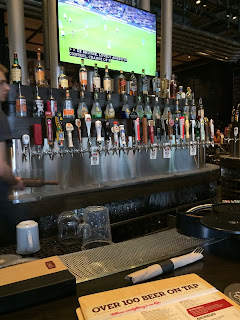
 All in all a great visit, Ottawa's scene is strong, homegrown and supported by bars, the LCBO and companies like Brew Donkey.
All in all a great visit, Ottawa's scene is strong, homegrown and supported by bars, the LCBO and companies like Brew Donkey.
Drinking out isn't cheap, but the quality of the beer and the knowledge of the staff make it worth while. As with America all establishments are predominately catered for food with few for drinks only, so sit at the bar and take the opportunity of tasters and your servers knowledge.
Must try:
Bellwood Brewery
Dieu Du Ciel
Muskoka
Beyond The Pale
Nickel Brook
Stalwart





